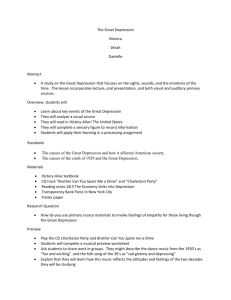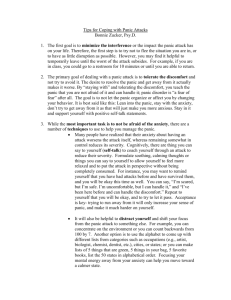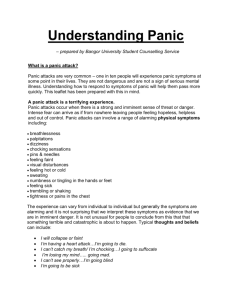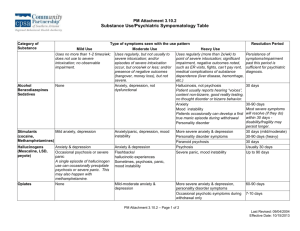Description Relations to Panic of 1873 Visual Panic of 1873 The
advertisement
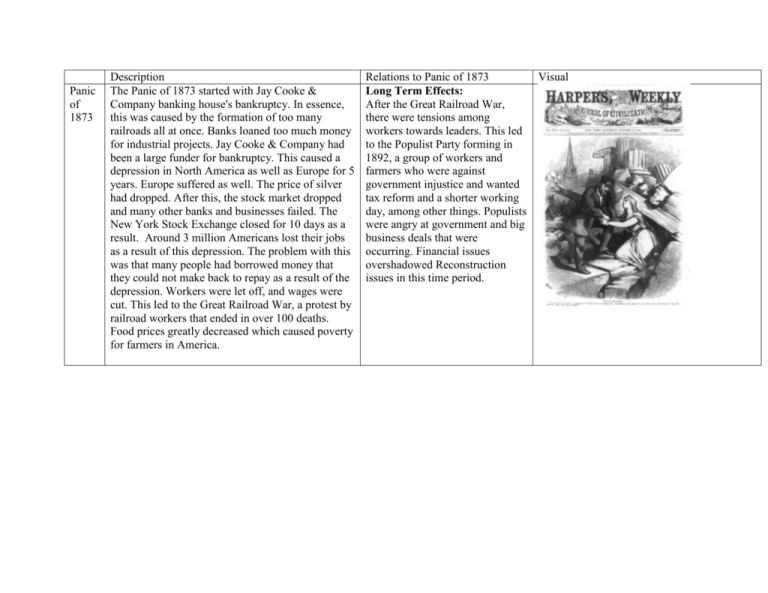
Panic of 1873 Description The Panic of 1873 started with Jay Cooke & Company banking house's bankruptcy. In essence, this was caused by the formation of too many railroads all at once. Banks loaned too much money for industrial projects. Jay Cooke & Company had been a large funder for bankruptcy. This caused a depression in North America as well as Europe for 5 years. Europe suffered as well. The price of silver had dropped. After this, the stock market dropped and many other banks and businesses failed. The New York Stock Exchange closed for 10 days as a result. Around 3 million Americans lost their jobs as a result of this depression. The problem with this was that many people had borrowed money that they could not make back to repay as a result of the depression. Workers were let off, and wages were cut. This led to the Great Railroad War, a protest by railroad workers that ended in over 100 deaths. Food prices greatly decreased which caused poverty for farmers in America. Relations to Panic of 1873 Long Term Effects: After the Great Railroad War, there were tensions among workers towards leaders. This led to the Populist Party forming in 1892, a group of workers and farmers who were against government injustice and wanted tax reform and a shorter working day, among other things. Populists were angry at government and big business deals that were occurring. Financial issues overshadowed Reconstruction issues in this time period. Visual Panic of 1819 Panic of 1819 is considered the first American depression that rooted back to the war in 1812. It was triggered by a collapse in the cotton industry. Banks throughout the country failed and mortgages were foreclosed, which forced people out of their homes. Falling prices impaired agriculture and manufacturing, which triggered unemployment. All parts of the country were impacted and the country did not stabilize until 1824. The cause of this widespread misery was due to a change towards more conservative credit policies by Second Bank of the United States. Northerners reacted by enacting high tariffs that would protect them from foreign competition. Southerners, however, began a long campaign against duties hoping the freer trade would revive the cotton economy. Westerners, yet again blamed bankers and speculators. Both the Panic of 1819 and Panic of 1873 dealt with financial crisis. They were both a cause of falling stocks and prices. Both depressions left many in America unemployed and in misery. The depressions took a few years to settle down. Similarly, in Panic of 1873, America’s farm economy was impacted just like the impaired agriculture in Panic of 1819. Panic of 1837 The Panic of 1837 was the second largest American depression. It was primarily due to President Andrew Jackson’s actions. The Second Bank of the United States was the center of the national economy; however during his presidency, Jackson distributed the federal funds to the state banks, and he shut down the Second Bank of the United States. Furthermore, crop failure and collapse in cotton prices contributed to the Panic. By the time Van Buren became president, he Panic of 1837 had begun. Banks began to close and businesses failed. Also, people lost their lands. President Buren, like Thomas Jefferson, was a believer of strong state governments, and limited federal power. Although the national funds should have been restored to a national bank; however President Buren did move There were many similarities between the Panic of 1837 and Panic of 1873. Both depressions caused numerous business failures. Furthermore, both depressions were faced a collapse in the prices of goods, (cotton for 1873 and food for 1873) resulting is poverty in America. the federal funds from smaller state banks to an independent treasury. Panic of 1893 The Panic of 1893 is the worst economic depression the United States has ever endured. A growing credit shortage created panic, resulting in a depression. Over the course of this depression 15,000 businesses, 600 banks, and 74 railroads failed. There was severe unemployment and widescale protesting, which in some cases became very violent. The economic collapse of the Philadelphia and Reading Railroads was the first step. Spreading towards Europe, British investors sold their American investments and redeemed them for gold. This fostered a growing American gold loss. By May 15, stock prices reached an all-time low. Many major firms, such as the Union-Pacific, Northern-Pacific and Santa Fe railroads, were forced to declare bankruptcy. Unemployment steadily grew, rising from 1 million in August 1893 to 2 million by January 1894, and up to 3 million by the end of the year. The government had no plan to end the economic panic. Most relief for those without jobs was provided by local voluntary The Panic of 1873 and 1893 are similar as both involved the shaky financing of railroads, resulting in bank failures. In both of these depressions, the economy plummeted because of over-loaning. They both ended up with unemployment, and failed businesses, railroads, and banks. Differences between the two are that the Panic of 1893 was worse than the one in 1873 in terms of the damage done and that the Panic of 1873 only affected Americans whereas the Panic of 1893 did have a slight impact on Europe. It would've had a much bigger impact if European investors didn't sell their American investments and redeem them for gold. Great Depre ssion organizations, who were quite overwhelmed by the need. The Great Depression was a worldwide economic depression that occurred after World War II. The Depression began in in 1930 and lasted until the late 1930s or middle 1940s. The Great Depression started in the United States after September 4, 1929 when stock prices began to fall and became a major problem after the stock market crash on October 29, 1929. Other causes of the Great Depression include a weak banking system, over-production of goods, over spending, and a bursting credit bubble. The Great Depression affected both the rich and the poor. Personal income, tax revenue, profits and prices dropped while unemployment rose significantly. Crop prices fell by over 60%, harming farming and rural areas. Finally, mining, cash cropping, and logging suffered the most. Some economies started to recover by the mid-1930s. The Panic of 1873 and the Great Depression were caused by stock market crashes that forced many businesses to fail. Unemployment rates increased significantly during these time periods. The farm economy was negatively impacted in both the Great Depression and the Panic of 1837. The biggest difference between the Panic of 1873 and the Great Depression was that the Panic of 1873 affected solely American while the Great Depression affected many other countries.

